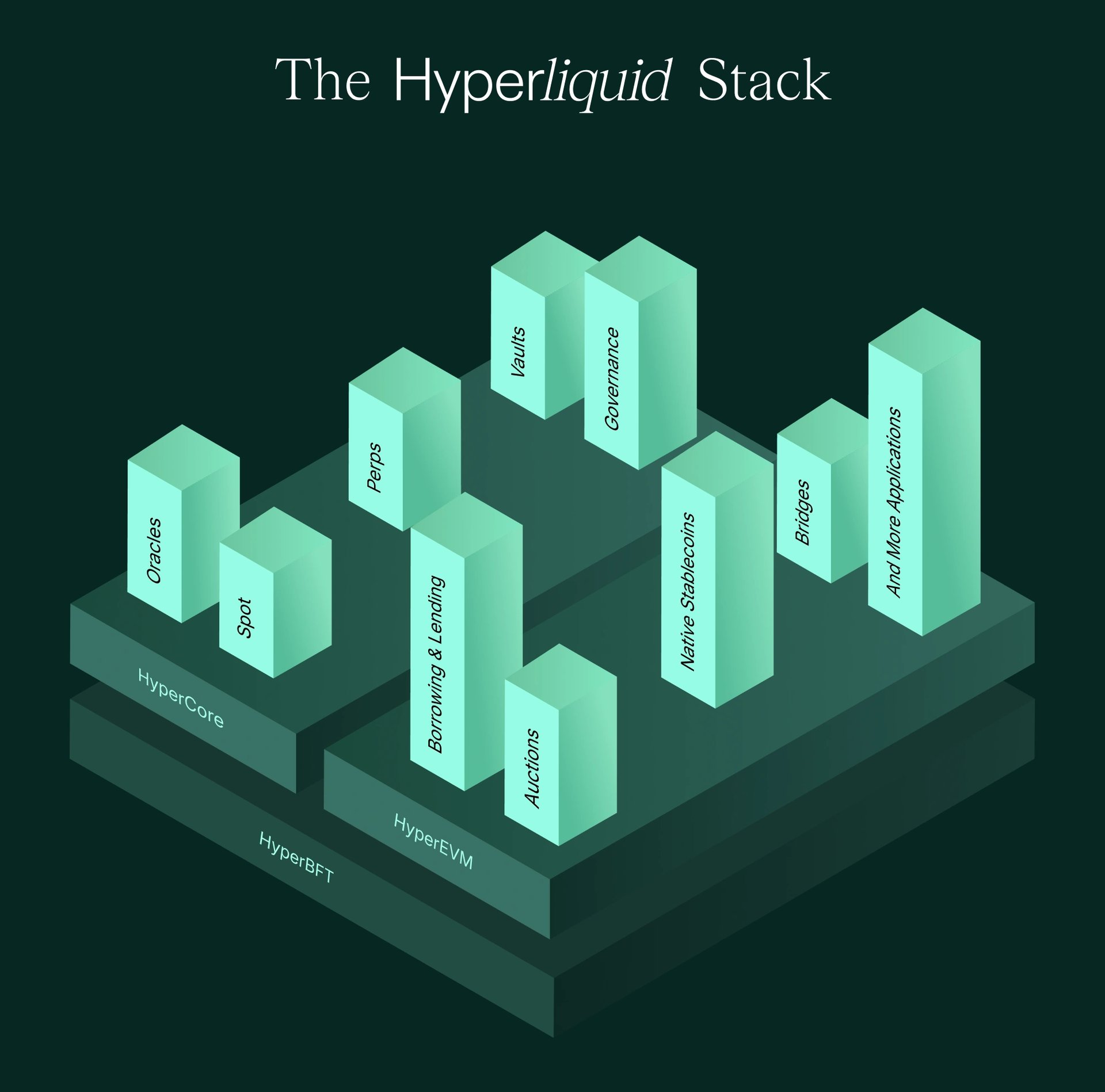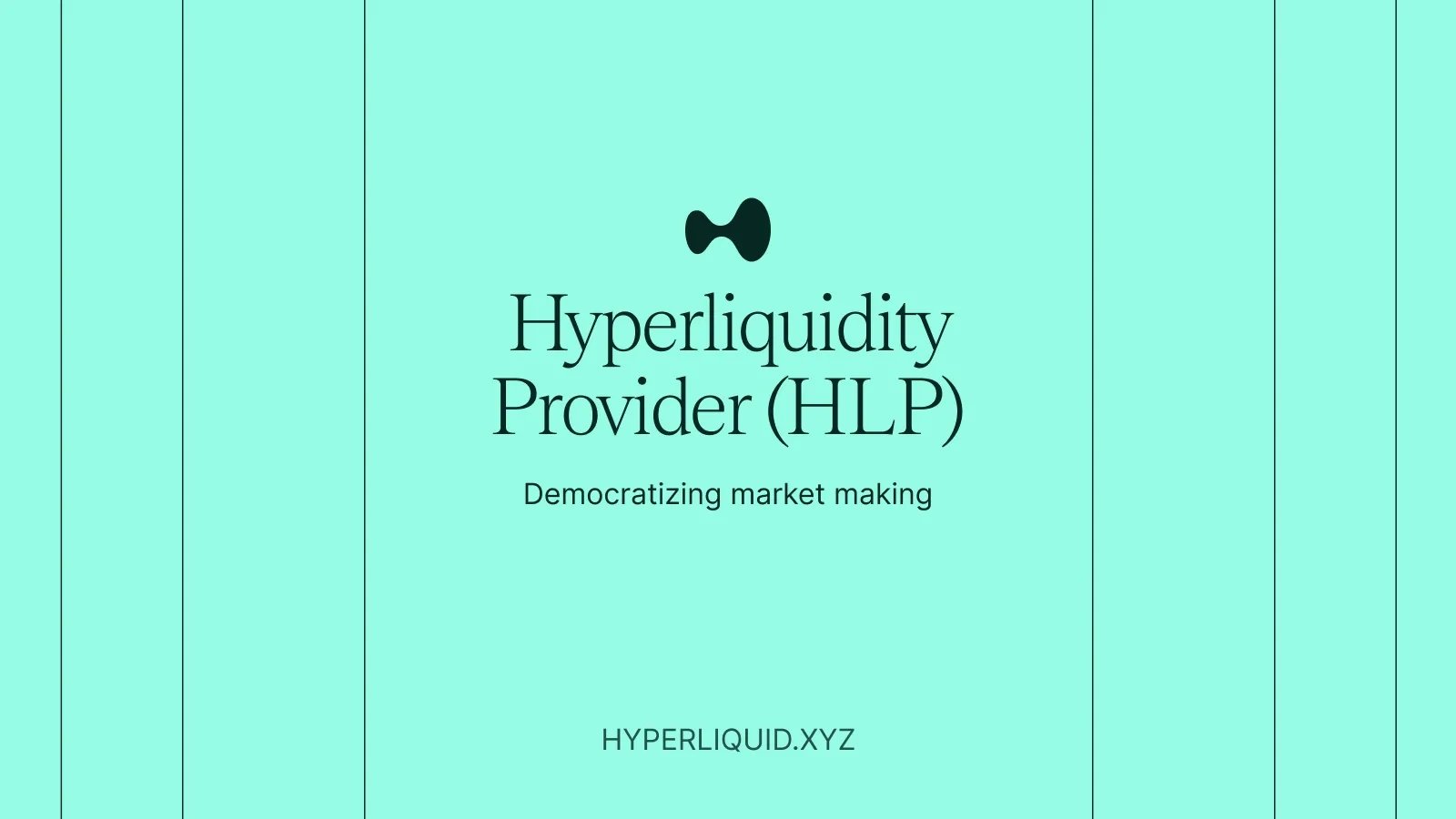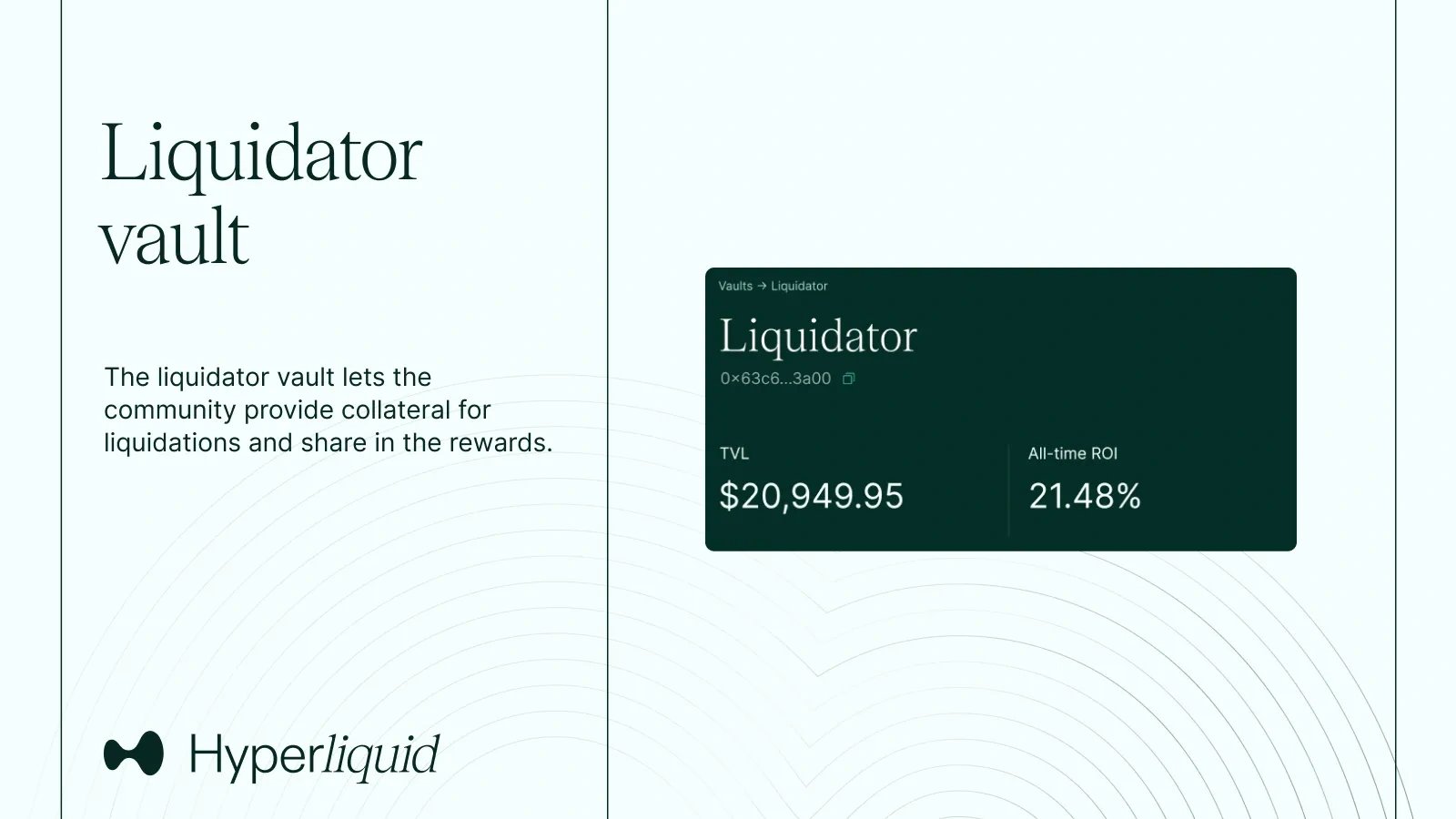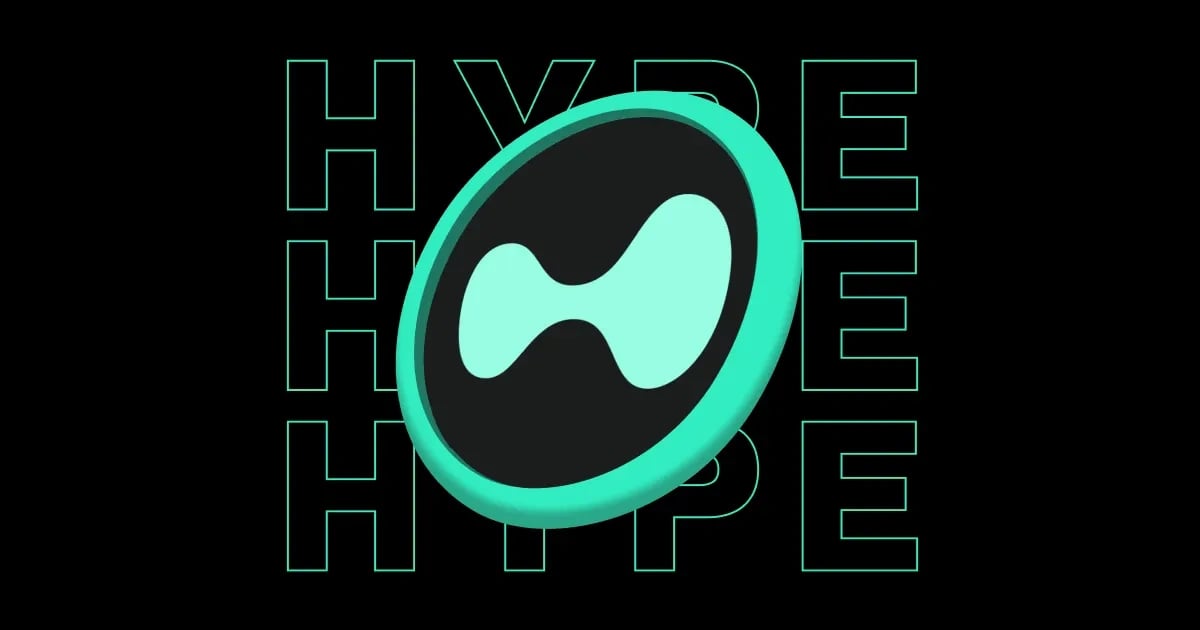Hyperliquid
하이퍼리퀴드(Hyperliquid)는 자체 1계층 블록체인 상에 구축된 탈중앙화 거래소(DEX)입니다. 중앙화 플랫폼의 효율성과 탈중앙화 시스템의 투명성을 결합합니다. 이 플랫폼은 중개자에 의존하지 않고 빠른 거래, 낮은 수수료 및 무기한 파생 상품을 포함한 고급 거래 도구를 제공합니다. [3]
개요

하이퍼리퀴드는 온체인 금융 시스템을 위해 설계된 레이어 1 블록체인입니다. 유동성, 사용자 애플리케이션 및 거래 활동을 단일 플랫폼에 통합합니다. Hotstuff 및 후속 제품을 기반으로 특정 요구 사항에 맞게 최적화된 맞춤형 합의 알고리즘인 HyperBFT를 사용합니다.
블록체인의 상태 실행은 HyperCore와 HyperEVM으로 구성됩니다. HyperCore는 완전한 온체인 만기일 없는 선물 및 현물 주문장을 지원하며, 초당 최대 200,000개의 주문을 처리하고 1블록 확정성을 제공합니다. HyperEVM은 이더리움과 호환되는 스마트 계약 기능을 하이퍼리퀴드로 확장하여 사용자가 금융 인프라를 기반으로 구축할 수 있도록 합니다. [2]
특징
HyperEVM
HyperEVM은 Hyperliquid의 계층 1(Layer-1)에 통합된 이더리움 가상 머신(EVM, 이더리움 버추얼 머신)이며, HyperCore와 동일한 HyperBFT 합의(consensus) 메커니즘으로 보안이 유지됩니다. 이러한 설계를 통해 EVM과 HyperCore 간의 원활한 상호 작용이 가능하며, 현물 및 무기한 주문장에서 자산을 사용할 수 있습니다. HyperEVM은 이중 블록 아키텍처를 사용하여 빠르고 작은 블록과 느리고 큰 블록으로 처리량을 분산함으로써 트랜잭션 속도와 블록 크기의 균형을 맞춥니다. 빠른 블록은 2초마다 생성되며 가스(gas) 제한은 2M이고, 느린 블록은 1분마다 생성되며 가스(gas) 제한은 30M입니다. 시스템의 처리량은 향후 업그레이드를 통해 증가할 것으로 예상됩니다.
HyperEVM의 스마트 계약(smart contracts)은 Hyperliquid의 핵심 기능(온체인 현물 및 무기한 선물 주문장 포함)과 직접 상호 작용할 수 있으므로 플랫폼의 거래 인프라와의 호환성이 향상됩니다. Hyperliquid의 실행 모델을 통해 L1과 HyperEVM이 순차적으로 작동할 수 있으므로, EVM은 이전 블록의 블록체인(blockchain) 상태에 액세스하고 다음 블록에 대한 작업을 제출하여 일관되고 예측 가능한 작업을 보장합니다. HyperEVM의 ERC-20 토큰은 Hyperliquid의 네이티브 토큰과 동일하며, 토큰 거래 및 탈중앙화 애플리케이션(dApps) 내에서 사용 시 최소 수수료와 높은 유동성을 제공합니다. [4] [5] [6]
HyperBFT
HyperBFT는 Hyperliquid의 합의 알고리즘으로, 보안과 일관성을 유지하면서 고빈도 거래를 위해 설계되었습니다. HotStuff 프로토콜을 기반으로 하며, 1초 미만의 블록 확인 시간, 0.2초의 중간 지연 시간, 초당 200,000건 이상의 트랜잭션 처리 용량을 제공합니다. 최적화가 지속됨에 따라 초당 100만 건 이상의 주문 처리량을 달성할 수 있습니다. HyperBFT는 비잔틴 장애 허용을 유지하여, 검증자의 최대 1/3이 악의적으로 행동하더라도 네트워크가 작동할 수 있도록 합니다. 또한 Hyperliquid의 레이어-1과 HyperEVM에서 공유 상태를 보장하여 원활한 데이터 가용성 및 동기화를 제공합니다. [6]
볼트
HyperCore 볼트는 청산 및 고처리량 시장 조성과 같은 DEX와 동일한 기능을 활용하는 전략을 가능하게 합니다. 단순한 토큰 재조정 볼트와 달리, 이러한 볼트는 더 복잡한 전략을 허용합니다.
사용자는 볼트에 예치하여 수익의 일부를 얻을 수 있으며, 볼트 소유자는 총 수익의 10%를 받습니다. 프로토콜 볼트에는 수수료나 수익 공유가 없습니다. 볼트는 시장 조성자에 의해 수동 또는 자동으로 관리될 수 있습니다. 각 전략에는 위험이 따르므로 사용자는 예치하기 전에 성과를 평가해야 합니다. [7]
하이퍼리퀴디티 제공자(Hyperliquidity Provider)

하이퍼리퀴디티 제공자(HLP) 프로토콜 볼트는 시장 조성 및 청산을 위해 설계되었습니다. 거래 수수료의 일부를 수익으로 얻습니다. HLP를 통해 커뮤니티는 유동성을 제공하고 수익을 공유하여, 일반적으로 특정 기관에만 허용되는 전략에 대한 접근성을 높일 수 있습니다. HLP는 완전히 커뮤니티 소유이며 수수료를 부과하지 않습니다. 수익은 예치자에게 비례적으로 배분됩니다. 인출은 최근 예치 후 4일 후에 가능합니다.
HLP는 초기 단계 DeFi 프로젝트에서 유동성에 필요한 전통적인 시장 조성 거래에 대한 대안을 제공하여 수익이 사용자에게 돌아가도록 합니다. 시장 조성 경험이 있는 Hyperliquid의 핵심 기여자들은 초기 클로즈드 알파 기간 동안 유동성을 제공했습니다. 잠재적인 이점이나 비대칭 정보에 대한 우려를 해소하기 위해, 팀의 전략은 공개적으로 접근 가능한 볼트에 보관됩니다.
HLP의 전략은 Hyperliquid 및 중앙화 거래소의 Tick 데이터를 사용하여 공정한 가격을 결정합니다. 지속적인 유동성을 제공하기 위해 시장 조성 및 주문 수락 전략을 통해 주문을 실행합니다. 전략은 오프체인에서 작동하지만, 모든 볼트 포지션, 미체결 주문, 거래 내역, 예치 및 인출은 투명성을 위해 온체인에서 확인할 수 있습니다.
시간이 지남에 따라 외부 시장 조성자가 Hyperliquid에 대량의 자금을 기여할 것으로 예상됩니다. API 및 SDK를 오픈소싱하여 온보딩을 용이하게 하고, 참여 증가를 통해 전략의 위험 관리 및 효율성을 개선할 것으로 예상됩니다. [8]
청산자 금고

청산자 금고를 통해 커뮤니티는 청산을 위한 담보를 제공하고 수익을 공유할 수 있습니다. 모든 청산은 온체인에서 발생하며 익스플로러를 통해 추적할 수 있습니다. 현재 청산은 청산자 금고를 통해 분산되어 있으며, 수익은 예치자에게 분배됩니다.
나중에 API를 통해 청산에 접근할 수 있게 될 수도 있지만, 현재로서는 청산자 금고가 청산으로부터 수익을 얻는 유일한 방법입니다. 이는 과도하게 레버리지를 사용한 트레이더의 청산을 이용하는 전략에 자금을 지원하며, 변동성이 심한 기간 동안 안정성을 유지하는 데 도움이 됩니다. 누구든 예치할 수 있으며, 짧은 락업 기간 후에는 인출이 허용됩니다. 금고는 포지션이 청산 가능할 때만 거래를 실행하고 청산 직후에 즉시 청산합니다.
청산자 금고는 분산되어 있으며 수익성이 있으며, 성과 지표는 공개적으로 제공됩니다. ROI 및 APY 계산은 과거 성과를 고려하여 통계적 노이즈를 줄이기 위해 금고 수명을 조정합니다. [9]
HYPE

HYPE는 플랫폼 의사결정에 참여할 수 있도록 하는 거버넌스 토큰입니다. 또한 Hyperliquid 블록체인의 가스 수수료로도 사용할 수 있습니다. 총 공급량은 10억 토큰으로 제한됩니다.
2024년, Hyperliquid는 에어드롭을 통해 HYPE를 출시했습니다. 배포는 현재 및 미래 사용자에게 토큰의 75%를 할당했으며, 상당 부분이 초기 참여자에게 돌아갔습니다. Hyperliquid는 벤처 캐피탈 자금에 의존하지 않았기 때문에 대부분의 토큰이 커뮤니티에 배포되었습니다. 20% 이상의 HYPE 토큰은 Hyperliquid Labs 개발자를 포함한 핵심 기여자에게 할당되었습니다. 이러한 토큰은 조기 매도를 완화하기 위해 2027년과 2028년 사이에 상환될 예정입니다. [1]
개발 현황
Hyperliquid(하이퍼리퀴드), JELLYJELLY(젤리젤리) 상장폐지
2025년 3월 27일 수요일, 솔라나 기반 밈 코인 JELLYJELLY(젤리젤리)가 잠재적인 고래 조작으로 인해 거의 500% 급등하면서 Hyperliquid(하이퍼리퀴드)는 유동성 위기를 겪었습니다. 이 급등으로 Hyperliquidity Provider(HLP) 금고에 일시적으로 1,200만 달러의 손실이 발생했지만, 검증자들이 개입하여 70만 달러의 이익으로 전환했습니다. [10] [11]
"의심스러운 시장 활동 증거가 발견된 후, 검증자 집합체는 회의를 열고 JELLY(젤리) 영구 계약의 상장폐지를 결정했습니다. 표시된 주소를 제외한 모든 사용자는 Hyper Foundation(하이퍼 재단)으로부터 손실을 보상받게 됩니다. 이는 온체인 데이터를 기반으로 향후 며칠 내에 자동으로 처리됩니다. 티켓을 열 필요가 없습니다. 자세한 방법론은 추후 공지에서 공유하겠습니다." - Hyperliquid(하이퍼리퀴드) 트윗
Hyerliquid(하이퍼리퀴드)는 영구 계약 거래소의 주요 유동성 풀인 HLP가 지난 24시간 동안 약 70만 달러의 순이익을 기록했다고 덧붙였습니다. [12]
암호화폐 거래소 Bitget의 CEO인 Gracy Chen(그레이시 천)은 Hyperliquid(하이퍼리퀴드)의 영구 계약 거래소 처리 방식을 비판하며, 이로 인해 네트워크가 "FTX 2.0"이 될 위험에 처했다고 말했습니다. [13]
"#Hyperliquid(하이퍼리퀴드)는 #FTX 2.0이 될 수 있습니다.
$JELLY(젤리) 사건을 처리한 방식은 미성숙하고 비윤리적이며 비전문적이어서 사용자 손실을 야기하고 무결성에 대한 심각한 의문을 제기했습니다. 혁신적인 분산형 거래소로서 대담한 비전을 제시했음에도 불구하고, Hyperliquid(하이퍼리퀴드)는 KYC/AML이 없는 해외 CEX처럼 운영되어 불법 자금 흐름과 악의적인 행위자를 가능하게 합니다.
$JELLY(젤리) 시장을 폐쇄하고 유리한 가격으로 포지션 정산을 강제한 결정은 위험한 선례를 남깁니다. 신뢰는 자본이 아닌 모든 거래소(CEX 및 DEX 모두)의 기반이며, 일단 상실되면 회복하기가 거의 불가능합니다.
또한, 플랫폼의 제품 디자인은 놀라운 결함을 드러냅니다. 사용자를 시스템 위험에 노출시키는 혼합 금고와 조작의 가능성을 여는 무제한 포지션 규모입니다. 이러한 문제가 해결되지 않으면 더 많은 알트코인이 Hyperliquid(하이퍼리퀴드)에 대한 무기로 사용될 수 있으며, 암호화폐 시장의 다음 대참사가 될 위험에 처하게 됩니다." [14]
Hyperliquid, 최초 온체인 10억 달러 비트코인 베팅 지원
2025년 5월, "moonpig"(문피그)이라는 가명으로 활동하는 James Wynn(제임스 윈)이라는 트레이더가 Hyperliquid(하이퍼리퀴드) 탈중앙화 거래소에서 주목할 만한 레버리지 거래를 실행했습니다. [15]
40배 레버리지를 활용하여 Wynn은 Bitcoin(비트코인)에 대한 롱 포지션을 열었고, 이는 11억 달러가 넘는 규모로 확장되어 플랫폼에서 최초로 이 정도 규모의 온체인 포지션을 기록했습니다. 약 2,840만 달러의 마진으로 시작된 이 거래는 비트코인 가격 변동을 활용하여 비트코인 가격이 11만 2천 달러에 육박하면서 상당한 미실현 이익을 창출했습니다. [16] [17]
이후 Wynn은 롱 포지션을 청산하고 10억 달러 숏 포지션을 개설하여 시장 입장을 바꿨으며, 40배 레버리지를 유지했습니다. 이 전략적 변화는 전체 이익을 1,700만 달러 감소시켰습니다. 그러나 비트코인 가격이 11만 달러로 급반등하면서 숏 포지션이 청산되었습니다. 이러한 setbacks에도 불구하고 Wynn의 거래 활동은 그 규모와 시장 역학에 미치는 영향으로 주목할 만합니다. [18]
이러한 거래 행위는 HyperEVM 블록체인 기반의 탈중앙화 파생상품 거래소인 Hyperliquid에 대한 관심을 크게 끌었습니다. 이 플랫폼은 KYC 준수 없이 실시간 주문 내역 및 높은 유동성과 같은 기능을 제공합니다. Wynn의 고위험 거래는 플랫폼의 기능을 강조했을 뿐만 아니라 온체인 참여 증가와 플랫폼의 네이티브 토큰인 HYPE의 급증으로 입증된 바와 같이 시장 심리와 활동에도 영향을 미쳤습니다. [17] [18]
